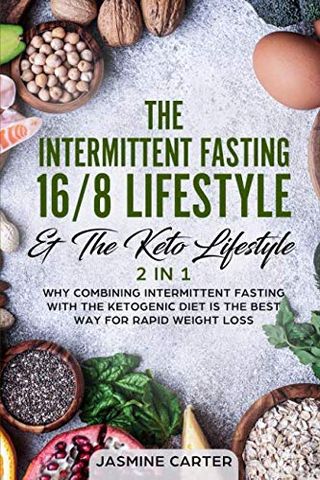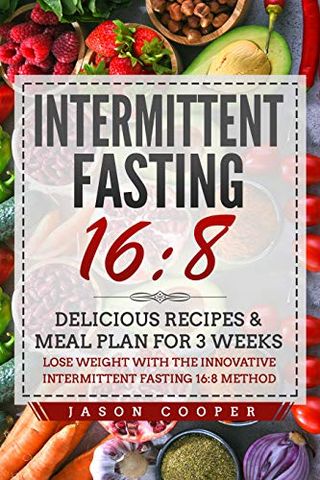Good Diet Lunches for Work
Intermittent fasting has gotten a lot of attention as a way to lose weight and feel healthier overall. All types of intermittent fasting (also called time-restricted eating or interval eating) adhere to the same overarching concept: eat whatever you want, but only during a certain period every day. For the rest of the time, you don't consume anything besides water.
One of the most popular types of intermittent fasting is called the 16:8 diet, where you limit your food intake to an 8-hour eating window and go 16 hours without eating any food. Some people call it the 16:8 diet or 16:8 fasting. Here's what you should know about it—and whether it can really help you lose weight.
What is the 16:8 diet?
The 16:8 diet is a version of intermittent fasting that restricts eating to an 8-hour window. During that time, you're allowed to eat and drink what you want with no calorie restrictions. During the 16-hour fasting period, you can (and should) drink plenty of water. Black coffee and tea are fine, too.
What time period works best? Keeping your eating window earlier—say, from 7 a.m. to 3 p.m.—seems to be the most beneficial. The body's biological clock is primed to eat earlier in the day, explains Courtney Peterson, PhD, assistant professor of nutrition at the University of Alabama at Birmingham. "In most people, blood sugar control is best in the morning and gets worse as the day progresses. You also digest food faster in the morning. So there's a metabolic advantage to eating earlier in the daytime," she says.
But if that timeframe seems unrealistic, don't worry. Recent findings suggest that bumping your eating window just a little bit later, from 10 a.m. to 6 p.m., could also be effective for weight loss.
⏰ When following the 16:8 diet, you restrict eating to an 8-hour window and then do a 16-hour fast. ⏰
Can the 16:8 diet help you lose weight?
It might. When 23 obese adults restricted their eating from 10 a.m. to 6 p.m. for 12 weeks, they ate around 350 fewer calories per day compared to the control group, according to a recent Nutrition and Healthy Aging study. They also lost a few pounds and saw a drop in their systolic blood pressure (the top number). However, that study was very small, and more research will be needed to confirm the results.
Going for longish periods without eating seems to send the body into fat-burning mode and limit blood sugar spikes. "Those two factors combined mean that you're reducing the blood sugar highs and lows that make you hungrier," Peterson says. Time-restricted eating also keeps your appetite in check by lowering the hunger hormone ghrelin, she adds.
There's another reason why 16:8 dieters might end up eating less. "I think participants found it difficult to eat all of their regular meals and snacks within the 8-hour timeframe," says Kristina Varady, PhD, associate professor of nutrition at the University of Illinois Chicago and a co-author of the Nutrition and Healthy Aging study. If trying to eat breakfast, lunch, and dinner between 10 a.m. and 6 p.m. seems like a squeeze, you'll likely end up cutting out a meal or shrinking your portions.
This content is imported from {embed-name}. You may be able to find the same content in another format, or you may be able to find more information, at their web site.
What are the drawbacks of following the 16:8 diet?
While the 16:8 diet seems like a great way to drop weight fast, it does have some cons. Sarah Mirkin, RD, author of Fill Your Plate, Lose the Weight, a 21-day meal plan designed to help women over 40 lose weight, says, "I think that it limits food intake to such a small window of time that it's difficult for someone to meet their nutritional needs."
Indeed, fasting for a long period of time probably means you're not able to enjoy three full meals with snacks each day. Whether you're skipping breakfast or dinner, missing a meal always results in not receiving adequate nutrients. And since the 16:8 diet gives you license to eat whatever you want, you might be tempted to fill up only on fatty, processed foods, especially if you're feeling ravenous. Hunger can also clout your better judgment and lead you to binge eat as well. "Studies show that the majority of people are not able to sustain it for very long and oftentimes end up binging on unhealthy foods, causing weight gain," Mirkin says. Other drawbacks of 16: 8 fasting include poor sleep, muscle mass loss (since it doesn't allow enough time during the day to meet protein needs), disordered/binge eating, weakness, nausea, and fatigue, Mirkin says.
To help you make better food choices and avoid binge eating, Mirkin recommends sticking to a 12-hour eating window instead of an 8-hour one. "This allows adequate sleep and prevents late-night munching. It also allows you to fuel evenly throughout the day so that a person is able to meet their nutritional needs without watching the clock so closely," Mirkin explains.
Is 16:8 diet better than other types of intermittent fasting?
It all depends on you. Researchers suspect that the 16:8 diet isn't quite as effective for weight loss as more extreme forms of fasting, like alternate-day fasting. On the other hand, studies suggest that alternate-day fasting doesn't produce better weight loss results compared to daily calorie restriction. Plus, eating only every other day is very restrictive and can be tougher to stick to.
The 5:2 diet is another intermittent fasting method, which allows you to eat normally five days a week and restricts your calories to just 500 to 600 for the other two days. The advantage of following the 5:2 diet versus the 16:8 diet is that you can eat normally on any days you want, depending on your schedule. However, research shows that the 5:2 diet isn't more effective than continuous calorie restriction.
So what if you think you could restrict your eating to fewer than eight hours, but aren't sure you could commit to alternate-day fasting? You might want to try shortening your daily eating window a little bit more. Varady and her team are currently in the process of comparing 4-hour and 6-hour eating windows for shedding pounds. "We are curious to see if these shorter eating windows result in more rapid weight loss compared to 8-hour time restricted feeding," she says.
Should you try the 16:8 diet?
The best diet is one that you can stick with, and that means finding a plan that fits into your daily routine. If you already tend to eat dinner on the early side, the 16:8 diet could be great. But for some people, stopping eating by 6 p.m. could have a negative impact on their social lives—dinner or drinks with friends could get trickier. (Still, there's always weekend brunch!) It might impact things at home too, if your family tends to eat on the later side. "People should choose the diet that best fits with their lifestyle and weight loss goals," Varady says.
On the other hand, an intermittent fasting-style diet just might feel simpler than trying to follow a more complicated eating plan—and that can count for a lot. "The idea of having a simple rule to follow may make it easier for people to avoid any mindless eating," Peterson says. "I have had some people tell me that intermittent fasting made it easier for them to eat healthfully."
Just remember: While you don't have to track your calories during your eating window, you shouldn't let things turn into a free for all. "It's smarter to still eat moderately," Peterson says. Stick with mostly healthy, minimally processed foods like lean proteins, complex carbs, and plenty of fruits and vegetables. As for portions? Eat until you're satisfied, not stuffed.
⚠️ Botton line: Just because you don't have to track your calories, it doesn't mean you should let things turn into a free fall diet. ⚠️
Finally, keep in mind that intermittent fasting isn't for everyone. You shouldn't do the 16:8 diet if you use insulin, have ever had an eating disorder, or are pregnant or planning to become pregnant, Peterson says. Always talk with your doctor before starting 16:8 fasting to make sure it's safe for you.
Best 16:8 Intermittent Fasting Books

The Intermittent Fasting 16/8 Lifestyle & The Keto Lifestyle 2 In 1

16:8 Intermittent Fasting

Intermittent Fasting 16/8: Delicious Recipes & Meal Plan for 3 Weeks
amazon.com

Intermittent Fasting: Eat What You Love, Heal Your Body, and Improve Your Health
Stay updated on the latest science-backed health, fitness, and nutrition news by signing up for the Prevention.com newsletter here . For added fun, follow us on Instagram .
Jenae Sitzes Editorial Assistant Jenae is the editorial assistant for Prevention.com, where she regularly covers nutrition, beauty, celebrity workouts, and health trends.
Marygrace Taylor Marygrace Taylor is a health and wellness writer for Prevention, Parade, Women's Health, Redbook, and others.
This content is created and maintained by a third party, and imported onto this page to help users provide their email addresses. You may be able to find more information about this and similar content at piano.io
Source: https://www.prevention.com/food-nutrition/healthy-eating/a21992175/16-8-diet-benefits/
0 Response to "Good Diet Lunches for Work"
Post a Comment